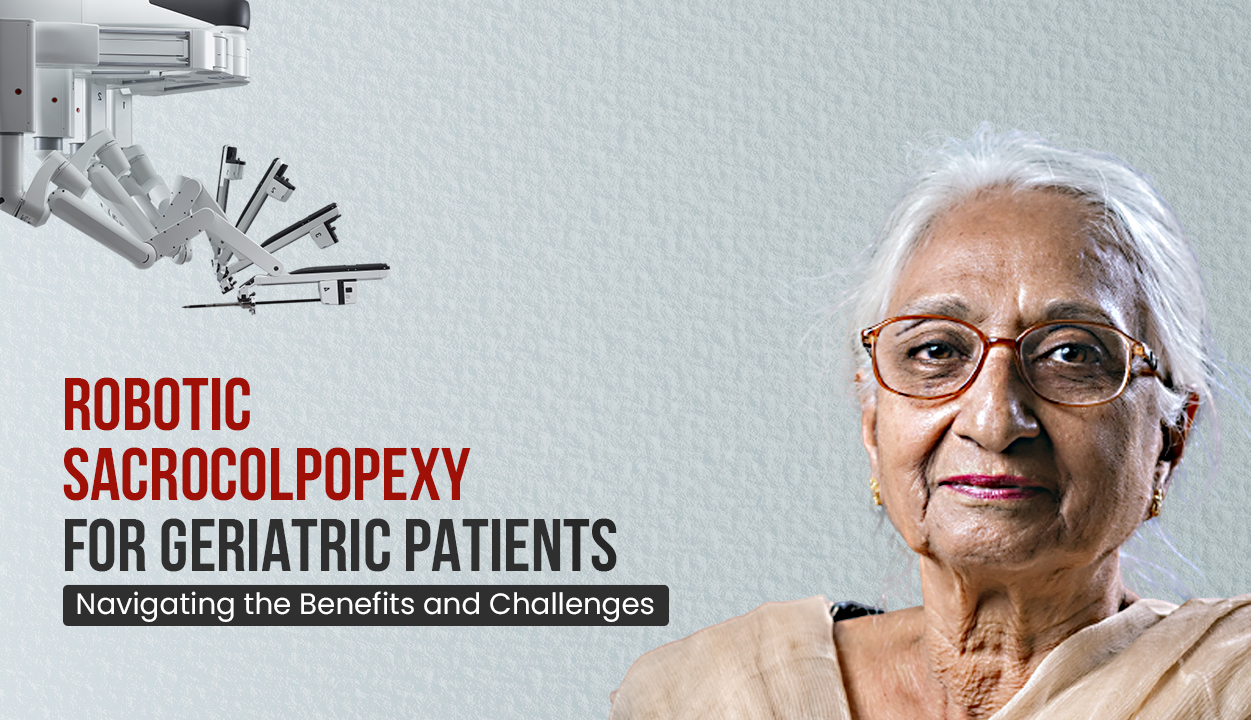
Robotic Sacrocolpopexy for Geriatric Patients: Navigating the Benefits and Challenges
In modern medicine, advancements continue to revolutionize how we approach healthcare, especially for geriatric patients. One such breakthrough is robotic sacrocolpopexy, a minimally invasive surgery that has shown promising outcomes for addressing pelvic organ prolapse in older adults. In this comprehensive blog, we’ll delve into robotic sacrocolpopexy, exploring its benefits and challenges in the context of geriatric patients.
Understanding Pelvic Organ Prolapse
Pelvic organ prolapse (POP) is a common condition, particularly prevalent among geriatric patients. It occurs when the muscles and ligaments that support the pelvic organs weaken, causing them to descend into the vaginal canal. This can lead to discomfort, urinary and bowel issues, and a decreased quality of life.
The Emergence of Robotic Sacrocolpopexy
Traditionally, surgical interventions for POP involved open procedures, often requiring large incisions and lengthy recovery times. Robotic sacrocolpopexy, on the other hand, offers minimally invasive surgery. This innovative procedure utilizes robotic technology to enhance surgical precision and effectively solve pelvic organ prolapse.
A Brief Overview of Robotic Sacrocolpopexy
The process of robotic sacrocolpopexy involves several key steps. Firstly, a comprehensive preoperative assessment is conducted to evaluate the patient’s overall health and suitability for the procedure. On the day of surgery, the patient is administered anesthesia to ensure comfort throughout the operation. Minimally invasive surgery is characterized by small incisions that enable the entry of robotic instruments. A synthetic mesh is then strategically placed to reinforce and support the weakened pelvic tissues and is securely attached to both the sacrum and vaginal wall. Following the completion of the procedure, the incisions are meticulously closed. The patient then enters a monitored recovery phase, during which their condition is carefully observed.
Benefits for Geriatric Patients
- Minimally Invasive Surgery: Robotic sacrocolpopexy involves small incisions and utilizes advanced robotics for precise manoeuvring. This results in reduced trauma to surrounding tissues and quicker recovery times – a significant advantage for geriatric patients who may have underlying health conditions.
- Shorter Hospital Stays: The minimally invasive nature of robotic sacrocolpopexy often allows for shorter hospital stays than traditional open surgeries. This is particularly beneficial for geriatric patients, minimizing the risk of complications associated with prolonged hospitalization.
- Less Pain and Discomfort: Geriatric patients often have reduced pain tolerance. The smaller incisions and advanced technology used in robotic sacrocolpopexy can lead to less postoperative pain and discomfort.
- Faster Return to Normal Activities: A shorter recovery period means geriatric patients can resume their daily activities sooner, improving their overall quality of life.
Challenges to Consider
- Technical Expertise: Performing robotic sacrocolpopexy requires specialized training and expertise. Surgeons must undergo rigorous training to operate the robotic system effectively and ensure optimal patient outcomes.
- Cost: While the benefits are evident, robotic sacrocolpopexy may have a higher initial cost due to the advanced technology involved. However, the long-term benefits may outweigh the initial expense when considering reduced hospital stays and faster recovery times.
- Patient Selection: Not all geriatric patients may be suitable candidates for robotic sacrocolpopexy. Factors such as overall health, previous surgeries, and anatomical considerations must be taken into account when determining the appropriate treatment approach.
Robotic sacrocolpopexy presents a promising avenue for addressing pelvic organ prolapse in geriatric patients. Its minimally invasive nature, shorter recovery times, and potential for improved quality of life make it a compelling option. However, careful patient selection, surgeon expertise, and consideration of costs are essential factors in ensuring successful outcomes.
To know more about robotic sacrocolpopexy and its potential benefits, consult our experienced medical professionals, dedicated to providing personalized, high-quality care for geriatric patients.
Get an appointment at https://yashodahospital.org/#
